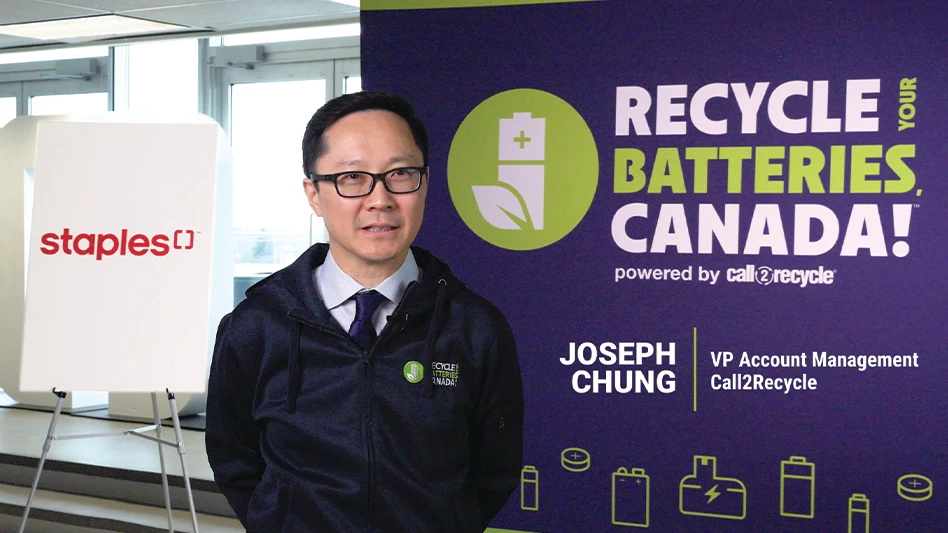To fully understand the recovered paper market in Europe, or anywhere else for that matter, one has to understand globalization’s affect on the industry in general.
The increasing globalization of recovered fiber markets is a key trend in the business. Major decisions governing recovery policies and strategies, as well as new investments in recovered fiber-based paper and board grades, have to be made in light of a thorough understanding of their international implications, particularly their impact on trade balances.
One must consuder several factors in the international fiber and paper markets—from paper demand developments, furnish issues, competitiveness, ongoing projects and fiber availability before making conclusions concerning future recovered fiber demand and supply.
MARKET OVERVIEW. World consumption of paper and board increased by 35 percent, or 84 million tons, in the 1990s, despite the major recession in the industrialized world in 1992-1993 and the financial crisis in Asia in the late 1990s. In 2005, recovered fiber consumption is expected to reach 185 million tons. Annual growth in consumption averaged a little more than 3 percent during the 1990s, but from 2000 through 2005, slower growth of some 2.7 percent yearly is forecasted. The main brakes on growth will be increasing demands to reduce the volume of packaging waste (including lightweighting) that will inevitably impact the growth opportunities for corrugated cases, particularly in industrialized countries. The forecast includes a gradual economic recovery in 2004-2005 for western countries.
Thus, the outlooks for the two paper and board grades, which are by far the largest users of recovered fiber worldwide, are less buoyant. Slow or slower growth in consumption of paper and board will be particularly evident in North America, Japan and, to a lesser extent, Western Europe—which together account for 65 percent of all demand for recovered fiber. Fortunately, strong growth will be a continuing feature inChina and Far East Asia.
The growth of recovered fiber by the world’s paper and board industries during the last 30 years has been exceptional. World consumption of recovered fiber by the paper and board industry has risen from 30 million tons in 1970 to more than 160 million tons in 2002.
Sustaining this exceptional performance is unlikely.
The growth rate of paper and board consumption has decreased, but the proportion of recovered fiber in furnishes has risen, aided by advances in technology and consumer acceptability. However, the incremental use of recovered fiber in the main paper and board grades will slow, because recycled fiber content levels are getting nearer and nearer to the optimum with present recycling and paper making technology.
KEY BUSINESS ISSUES. The recycled fiber business is rapidly changing from a local to an increasingly global business. Four issues will dominate its development in the coming years:
• North America’s changing role in the global paper recycling
business, which stems essentially from the lack of invest-
ment in new capacity for recycling in North America;
• Regional imbalances between investments in new capacity for
recycling and availability of raw materials;
• Changing patterns of trade in recovered fiber; and
• Regional concentrations of investments in new paper and
board capacity.
From a global perspective, two major ongoing trends are North America’s lack of recent investment in recycling and China’s rapidly expanding paper and board industry.
North America, which accounts for almost one-third of global recycling activity, is responsible for only 6 percent of new investment in recycling. In light of this, it is not surprising that the surplus of recovered fiber in North America will continue to increase. North America is an increasingly mature market for recycling and future development rates will be slower than in the past. Increasingly, investments will be made in updating existing lines rather than in constructing new capacity.
In contrast with North America, investment continues relatively strong in Europe. Rising surpluses in Western Europe will be more a consequence of high collection rates than low investment levels.
Germany, the United Kingdom and the Benelux nations (Belgium, the Netherlands and Luxembourg) are the main European exporters of recovered fiber. German net exports of recovered fiber fell by 1 million tons between 2000 and 2002, while the U.K.’s net exports grew by 0.7 million tons. The U.K. has passed Belgium as the second largest European net exporter. With only one major new recovered fiber investment under development in the U.K., exports will continue to develop.
Companies plan to absorb the German recovered paper surplus by investing in new, partly subsidized capacity. The European surplus in OCC and mixed grades are particularly threatened by market conditions.
Spain is Europe’s main net importer of recovered fiber, while Italian and French deficits have rapidly declined.
European investments in recovered fiber seem to boom every second year, and 2004 will be critical, with 1.8 million tons of new recovered fiber demand that will be difficult to satisfy without a major upswing in paper and board consumption.
China, where announced projects will add some 10 million tons of recycling capacity between 2000 and 2005, continues to dominate the high level of investment in the Asia Pacific region. The pattern of investment and its implications for the main grades of recovered fiber is significant.
While the largest growth will be in the use of packaging grades, investment in further de-inking capacities for old newspaper and magazines, and additional requirements for these grades will not be far behind. Within regions, investments concentrate on a few countries: In Europe, Germany is in the forefront; and in Asia, China is naturally where most investments are made.
In containerboard, expansions are heavily concentrated in China, which accounts for more than 6 million tons per annum of new capacity from 2000 to 2005, or roughly half of all capacity additions in the world. Germany also has several new projects, though all of these announced projects may not be realized, or their timing may change. But in Japan, mill closures have released OCC grades for export, a welcome new supply source for containerboard mills in several other Asian countries.
EMERGING REGIONAL IMBALANCES. In the industrialized regions of North America, Western Europe and Japan, the gap between recovery and utilization levels will increase and surpluses will grow. U.S. exports are expected to reach 14 million tons by 2005.
Western Europe was a small net importer of recovered fiber until the mid-1990s, but thereafter it has seen clearly higher recoveries than consumption. China and Far East Asia will increasingly attract European exporters. For Asian mills these quantities are a welcome addition to the traditional trade from North America.
Total European recovered fiber exports to China and Far East Asia were nearly 3.5 million tons in 2001-2002. Chinese imports from Europe increased rapidly to a level of 1 million tons per annum, but did not grow further in 2002. German and Benelux exports to Asia likely reached their maximum levels between 1999 and 2002.
The expansion of the European paper industry is likely to squeeze exports outside the region. The Confederation of European Paper Industries (CEPI), in a very conservative forecast, predicts that the European surplus will decline below 1 million tons. However, we are more optimistic in our forecast, believing that the U.K. will replace a considerable part of the German and Benelux exports.
Asian buyers do not have many alternative sources for recovered fiber and will evenly compete for the export tonnage with European mills.
But consumption in China, Far East Asia, Eastern Europe and Latin America will continue to outstrip local suppliers’ ability to meet the industry’s needs.
CHANGING TRADE PATTERNS. Until the middle of the 1990s, North America was practically the only regional supplier of recovered paper and board onto world markets. Since then, world trade has grown by 45 percent. But the pattern of world trade is changing in major ways.
Far East Asia’s import requirements continue to grow but are rapidly being caught up by China, which is now by far and away the largest buyer of recovered fiber on world markets. China’s monthly recovered paper imports reached their highest level of more than 0.9 million tons in the spring of 2003. North America continues to account for two-thirds of all imports and the quantity has grown recently. However, imports from Western Europe have doubled to some 0.2 million tons per month since early 2002. The U.S. is also facing increasing competition from Western Europe and Japan, whose interest in and contributions to world trade are growing quickly.
Despite a declining share of world trade, the United States will remain the dominant supplier to China and the rest of Asia and to Latin America. But Japanese suppliers will play an increasingly significant role in supplying China and other Asian markets.
Western Europe will continue to meet the import requirements of Eastern Europe and will be an important supplier to Asian countries, including China. However, numerous investment projects in Europe will decrease net exports from the current level of 3 million tons per annum.
Southern Europe’s role as an importer will diminish with improving collections, and Italy will even become self-sufficient in recovered fiber by 2005. This will increase pressure to export outside Western Europe.
TRADITIONAL BUSINESS IMPLICATIONS. The growth and self-sufficiency in recycled paper and board grades in Asia and Western Europe will have implications for traditional trading patterns in paper and board. New investments particularly hit kraftliner and newsprint export products.
As to containerboard, the growth of testliner production in Asia and Western Europe will reduce the need for imported kraftliner and is already impacting U.S. exports of kraftliner, with consequent reductions in U.S. capacity.
World trading patterns in paper and board will be impacted in a significant way as the whole fiber composition of large parts of the global paper and board business are revolutionized.
Esko Uutela is owner of EU Consulting, Starnberg, Germany. The firm provides consulting services to the recycled fiber and tissue business. He can be contacted via e-mail at euco.uutela@t-online.de or via phone at +49-8151-29193.

Explore the September 2003 Issue
Check out more from this issue and find your next story to read.
Latest from Recycling Today
- Recycled steel price crosses $500 per ton threshold
- Smithers report looks at PCR plastic’s near-term prospects
- Plastics association quantifies US-EU trade dispute impacts
- Nucor expects slimmer profits in early 2025
- CP Group announces new senior vice president
- APR publishes Design Guide in French
- AmSty recorded first sales of PolyRenew Styrene in 2024
- PRE says EU’s plastic recycling industry at a breaking point






